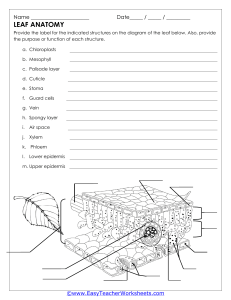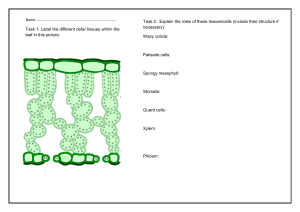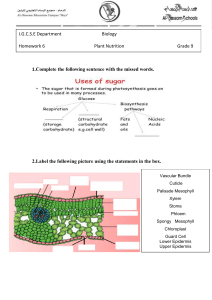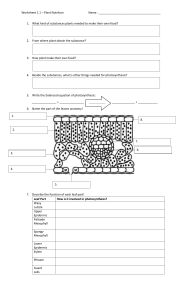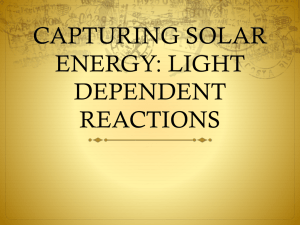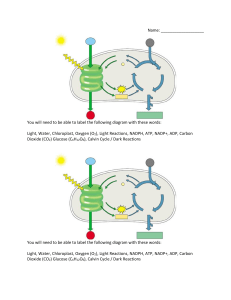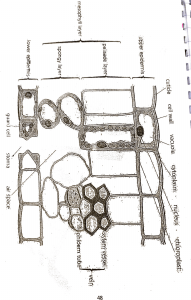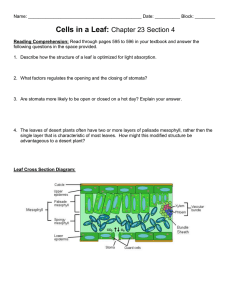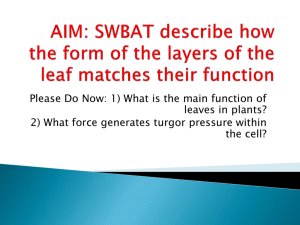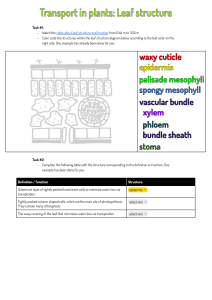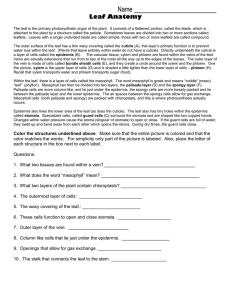Leaf Structure Worksheet: Biology Education
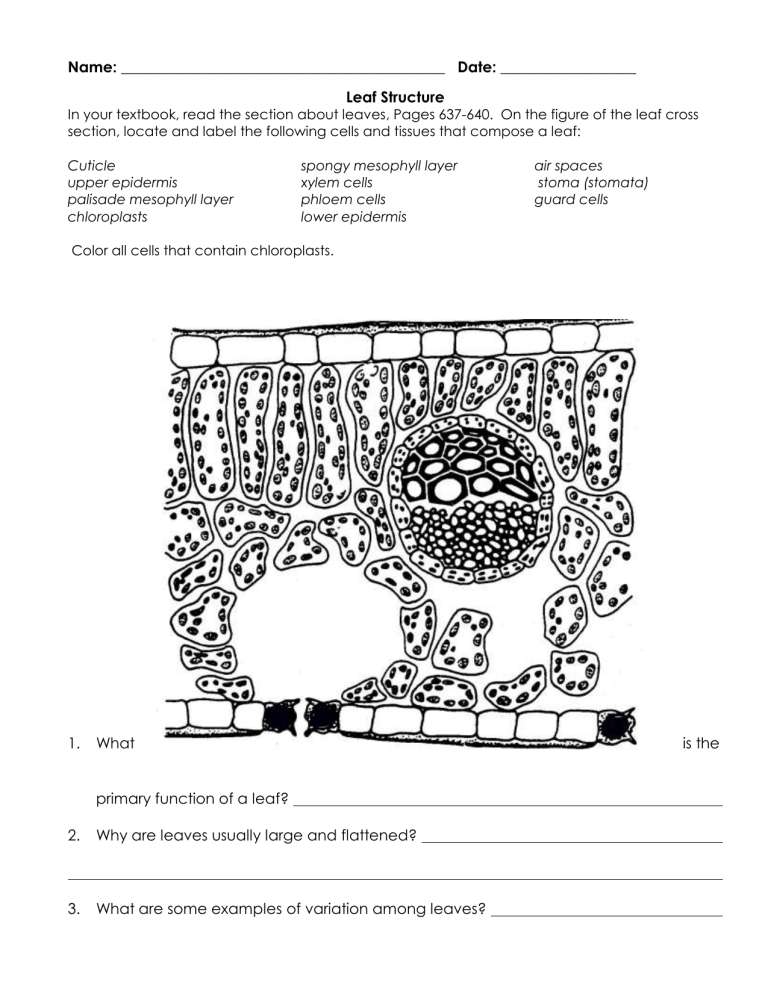
Name: ___________________________________________ Date: __________________
Leaf Structure
In your textbook, read the section about leaves, Pages 637-640. On the figure of the leaf cross section, locate and label the following cells and tissues that compose a leaf:
Cuticle spongy mesophyll layer air spaces upper epidermis palisade mesophyll layer chloroplasts xylem cells phloem cells lower epidermis
stoma (stomata) guard cells
Color all cells that contain chloroplasts.
1.
What is the primary function of a leaf?
2.
Why are leaves usually large and flattened?
3.
What are some examples of variation among leaves?
4.
How many layers thick is this upper epidermis (in your diagram)?
5.
Are any chloroplasts present in this upper epidermis?
6.
What happens in the mesophyll?
7.
What is the purpose of the air spaces in the spongy mesophyll?
8.
What is the function of the xylem cells (page 629)?
9.
What is the function of the phloem cells (page 630)?
10.
What is the function of the waxy cuticle?
11.
Where are the stomata located in relation to the air spaces of the spongy cells?
12.
What is transpiration?
13.
What causes the guard cells to open? What causes the guard cells to close?
14.
Make an inference about why rain forests are so damp.
15.
Page 613 has an illustration of a pine needle. What are three important differences between pine needles and leaves?
